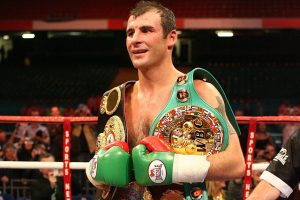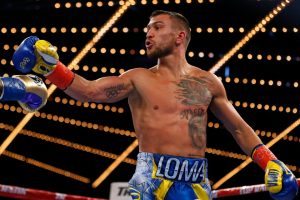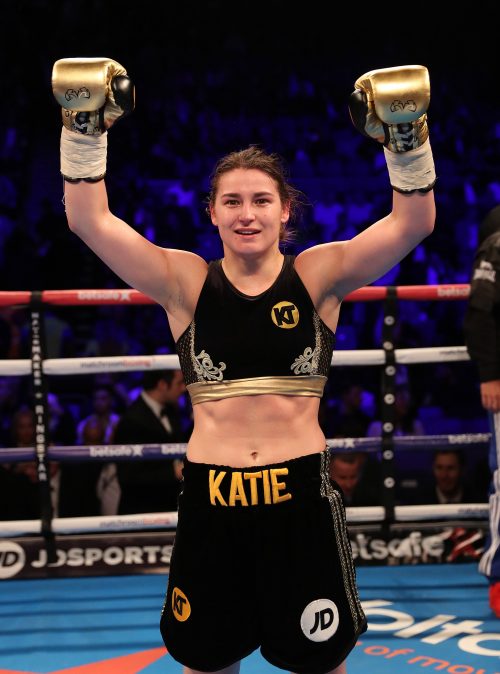“My toughest fight was making the weight for each fight. My life for so many years was waking up, running, training, sparring, jumping on the scales and going to bed. That was the hard bit, but the fight was always worth it.
‘Blood, sweat and tears’ is a common phrase in the world of boxing. For those who have shared a ring with another combatant, or even those who have tried their resolve in a local amateur gym, the idiom draws an incredible parallel to the fierce and unforgiving nature of the sport.
Even from the surface, boxing is a vicious practice. It is a world where its participants give every ounce of their being in-order to be successful, but perhaps what is even more alluding is what goes on beneath the surface.
There has been fights such as Arturo Gatti vs Micky Ward, Sugar Ray Leonard vs Marvin Hagler and Muhammad Ali vs Joe Frazier; which have brought fighters to the brink of physical and mental exhaustion; where spectators only see what life is like as a fighter for 36 minutes.
Beneath all the bright lights and flashing cameras is another phrase which many are yet to understand and one which fighters will know all too well; ‘fights are won in the gym’. Arguably the greatest to ever lace up the gloves; Muhammad Ali once said: “I hated every minute of training, but I said don’t quit, suffer now and live the rest of your life as a champion”. It’s a phrase that illustrates the sacrifice that fighters make on a day to day basis; one which is little used in sporting conversation and one which truly undermines the true recipe for success in a sport where spectators see just 36 minutes worth of a lifetime of practice.
Train Like a Champ
The tumultuous success of the great Joe Calzaghe echoes the ethos of boxing’s ‘unspoken’ rules. After beating some of the sports best in Chris Eubank Sr, Roy Jones Jr, Bernard Hopkins and Mikkel Kessler and retiring with a perfect 46-0 record, the decorated ‘Italian Dragon’ sheds light on the method behind the madness.
“All of the hard work is done in the gym. Your opponent is going to try and take your livelihood, so I always trained like a challenger and never took one of my opponents for granted”.
“My usual routine would be to train twice a day, six days a week. I would go for a run for 3-5 miles, but when I say run, I don’t mean jogging, I’m running with hills involved, I’m always trying to push myself when I run, and it was the same in the gym. Running was one of the most important things for me, I did a lot of it and because of that I was always fit, it was always mine and Dad’s philosophy to be fitter than the opponent”.
The legendary duo of father and son; Enzo and Joe would deploy a style which many believe to be the greatest to come out of the United Kingdom; with incredible volume punching, fierce forward pressure and unquestionable durability, all of which carefully crafted within grueling fight camps.
“My toughest fight was making the weight for each fight. My life for so many years was waking up, running, training, sparring, jumping on the scales and going to bed. That was the hard bit, but the fight was always worth it. When I jogged, I was running and when I was hitting the bags I was throwing 300 punches a round”.
However, It’s easy to be disillusioned with the reality of it all; the often ‘pointless’ times watching a brave competitor square off against a prime ‘Iron’ Mike Tyson; whom dispatched 22 of his foes within the very first round of their encounters, many uneducated viewers would argue it was “too easy” for the favourite. Beneath the surface however, the fighter who everyone is expecting to win has to rise from sleep in dark hours, punish their bodies for several hours a day, run mile after mile in the bitter morning air, spar eager-to-impress proteges, eat nothing but clean foods, drink up to 5 ltrs of water a day, sleep by 9pm and do it all again the day after that, often spanning some 12 weeks before they even make it into the squared circle.
Tyson’s lifestyle in camp followed a structure of a 4am jog spanning five miles, 6am shower, 10am breakfast, 12pm sparring often spanning 10 rounds; followed by 2,000 decline sit-ups, 500 bench dips, 500 push-ups, 500 barbell shrugs and 10 minutes of neck exercises, 3pm bag-work using double-end bag, focus mitts, slip bag and speed ball, followed by another THREE sets of his famous calisthenics routine, 5pm more focused shadow boxing followed by a further FOUR sets of calisthenics, 7pm another meal, 8pm resistance bike training, 9pm tape study and sleep. This, often spread across a two month camp, would culminate his fearsome fighting prowess, producing performances which often left spectators dissatisfied with the ‘simple’ nature of Mike’s victories.
On average; Tyson would endure 60,000 sit-ups, 15,000 bench-dips, 15,000 push-ups, 15,000 shrugs, 5 hours of neck work and 2,000 rounds of hard sparring before even competing in fights which he was ultimately SUPPOSED to win. It is this unrelenting desire to succeed which separates boxing from any other sport, the degree of sacrifice that fighters must give just to make the walk to the squared circle is often overlooked once the fight is concluded, and it is perhaps the most challenging aspect of the sport entirely.
In contrast, there are also fighters who explore unorthodox ways of training. Tyson’s unmerciful regiment
of strict calisthenics exercises and hard sparring, perhaps old fashioned in its nature but no less effective, can quickly become stale for some fighters, and in particular those who possess a different range of athletic skillset.
Take undisputed lightweight king; Vasyl Lomachenko for instance, and the two approaches to training, albeit for the same sport, have stark differences. Where Tyson pushes through 2,000 sit-ups and 500 push-ups, Lomachenko practices math equations, juggles six balls simultaneously, studies and trains in Ukrainian folk dancing, holds his breath underwater for 240 seconds and walks on his fists from one corner of the ring to the other.
“I went to dance classes as a ten-year-old boy to improve my feet, my father took me before I would train so that I would understand how to use my footwork in the ring. I think footwork is one of the most important things to becoming a great fighter; that’s where everything starts”.
Lomachenko first laced a pair of gloves at the age of three, under his father’s tutelage; Anatoly. Using unconventional training methods; the pair would culminate a training style that mirrored no other athlete, combining mental and physical conditioning with focused footwork drills, isolated cardiovascular tests, quick problem solving and relaxed skill-based sparring, in what would produce two Olympic gold medals, two World Championship gold medals, one European Championship gold medal, one Junior gold medal, the WBO Featherweight title, the WBO Super Featherweight title and the WBC, WBA and WBO Lightweight title, making him the undisputed, unprecedented pound for pound best.
Similarly following the guidance of her father; Katie Taylor also followed an unconventional path to boxing stardom, but one which similarly aided her development in different areas to other more conventional fighters. In her youth, Taylor represented the Republic of Ireland women’s football team whilst also boxing under the teaching of her father; Peter. Combining the two sports from the age of 11 gave Taylor both the competitive familiarity of top flight sport and the physicality to excel her athletic career. By strengthening her base with explosive kinetic movements in football, Taylor was able to build an incredibly strong ring presence which saw her capture an incredible 18 amateur titles, some of which whilst still playing international and club football, and eventually the undisputed women’s lightweight championship.
Read More on Vasyl Lomachenko HERE
Read more on Katie Taylor HERE
Read more on An Organic Perspective To Training HERE
Source of Lomachenko Quotes: BrainyQuote
Images by Forbes ,WBC Boxing & Matchroom






